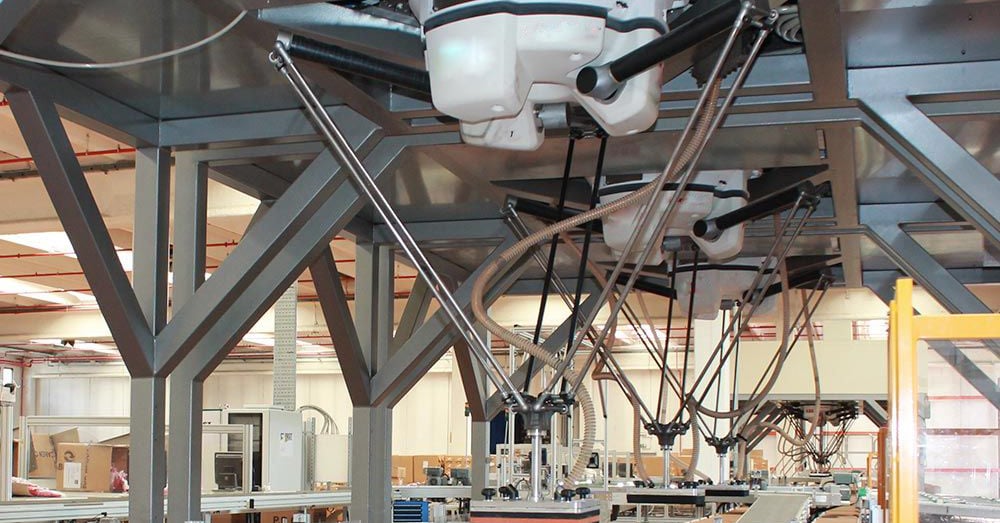Can Spider Robots Solve Your Toughest Manufacturing Challenges?
12/14/20234 min read


In the rapidly evolving landscape of technology and automation, businesses are constantly seeking innovative solutions to enhance efficiency, productivity, and overall performance. One groundbreaking advancement that has captured the attention of manufacturers worldwide is the spider robot. This versatile robotic system has the potential to revolutionize various industries by offering unique capabilities and addressing challenges that traditional methods may struggle to overcome.
I. Understanding Spider Robots
A. Design and Structure
Spider robots, also known as hexapod robots, draw inspiration from the incredible agility and adaptability of spiders in the natural world. Manufactured with cutting-edge materials and advanced engineering, these robots typically feature six legs, each equipped with multiple joints for precise movement and navigation.
B. Mobility and Maneuverability
The key strength of spider robots lies in their exceptional mobility and maneuverability. Unlike traditional wheeled or tracked robots, spider robots can navigate through complex terrains, climb vertical surfaces, and access hard-to-reach areas with ease. This unique capability makes them invaluable in a variety of industries where traditional robots would struggle to operate effectively.
II. Applications Across Industries
A. Manufacturing and Assembly
Spider robots have proven to be highly effective in manufacturing and assembly processes. Their ability to navigate crowded factory floors and access tight spaces allows for increased automation in assembly lines. Manufacturers can deploy spider robots for tasks such as intricate component assembly, quality control inspections, and maintenance of machinery.
B. Inspection and Maintenance in Hazardous Environments
Industries such as oil and gas, nuclear, and chemical manufacturing often involve hazardous environments where human access is restricted. Spider robots equipped with sensors and cameras can be deployed for inspection and maintenance activities in these challenging settings. This not only enhances safety but also minimizes downtime and reduces the risk to human workers.
C. Search and Rescue Operations
In emergency situations such as natural disasters or building collapses, spider robots can play a crucial role in search and rescue operations. Their ability to navigate uneven terrain and climb structures enables them to reach areas that may be inaccessible to human responders. Equipped with cameras and sensors, these robots can locate and assess the condition of survivors, providing critical information to rescue teams.
D. Agriculture and Farming
The agricultural sector is another domain where spider robots can make a significant impact. These robots can be employed for tasks such as precision agriculture, planting seeds, monitoring crop health, and even harvesting. The ability to move efficiently through fields without causing damage to crops makes spider robots an attractive solution for modernizing farming practices.
III. Key Benefits of Spider Robots
A. Enhanced Efficiency and Productivity
The agility and adaptability of spider robots translate into enhanced efficiency and productivity for manufacturers. These robots can perform tasks with speed and precision, reducing the time required for complex operations. This increased efficiency contributes to overall cost savings and improved output.
B. Versatility in Challenging Environments
Spider robots excel in environments where traditional robots may struggle to operate effectively. Their ability to navigate challenging terrains, including uneven surfaces, stairs, and obstacles, makes them suitable for a wide range of applications across various industries. This versatility expands the scope of automation in sectors that were previously difficult to automate.
C. Improved Safety
Deploying spider robots in hazardous environments minimizes the risk to human workers. Whether it's inspecting a nuclear reactor or exploring a disaster-stricken area, these robots can perform tasks that would pose a significant danger to humans. This not only protects human lives but also reduces the financial and reputational risks associated with workplace accidents.
D. Cost-Effective Solutions
While the initial investment in spider robot technology may seem substantial, the long-term benefits often outweigh the costs. The increased efficiency, reduced downtime, and improved safety contribute to a more cost-effective operation in the long run. Manufacturers can expect a return on investment through improved productivity and a competitive edge in the market.
IV. Challenges and Future Developments
A. Technical Challenges
Despite their impressive capabilities, spider robots face certain technical challenges. Power consumption, control algorithms, and communication systems are areas that manufacturers continue to refine to optimize the performance of these robots. Ongoing research and development efforts aim to address these challenges and unlock the full potential of spider robot technology.
B. Integration with Artificial Intelligence
The integration of artificial intelligence (AI) with spider robots opens up new possibilities for automation and decision-making. Future developments may include advanced AI algorithms that enable these robots to adapt to dynamic environments, learn from experience, and collaborate with other robots seamlessly.
C. Customization for Specific Industries
Manufacturers are increasingly exploring the customization of spider robots to suit the specific needs of different industries. Tailoring these robots for tasks such as specialized inspections, precise manufacturing processes, or unique agricultural applications can further enhance their utility and impact across diverse sectors.
In conclusion, the spider robot represents a groundbreaking leap in robotics technology, offering unparalleled mobility and versatility. As manufacturers, you stand at the forefront of a transformative era where these robots have the potential to reshape industries and redefine the possibilities of automation. From manufacturing and inspection to agriculture and search and rescue operations, the applications are vast and promising.
Embracing spider robot technology can lead to enhanced efficiency, improved safety, and a competitive edge in the market. As we navigate the challenges and advancements in this field, the future holds exciting possibilities for the integration of spider robots with artificial intelligence, further expanding their capabilities.
Contact Us for Free Consultation
Ready to explore how spider robots can revolutionize your business operations? Contact us at +60 19 268 9812 (Mr. Rajaa) for a free consultation and discover the tailored solutions that can elevate your manufacturing processes, increase efficiency, and position your business at the forefront of technological innovation. Embrace the future of automation with spider robots and unlock new opportunities for growth and success.
© 2025 T-Robot. All Rights Reserved.
